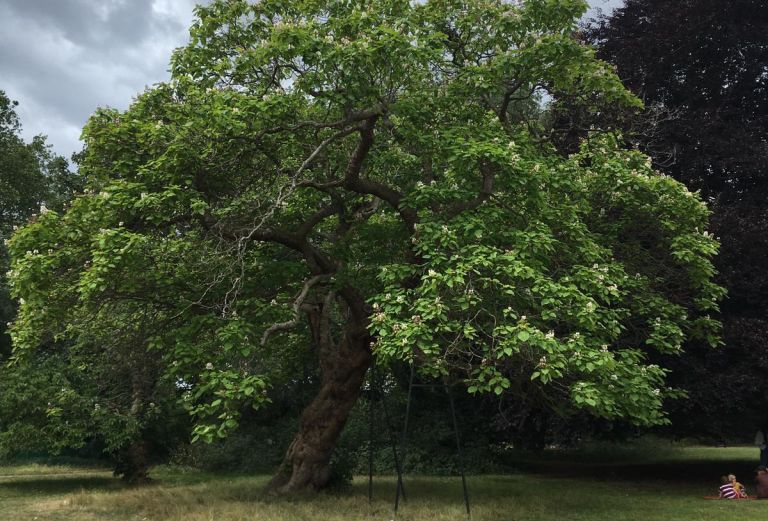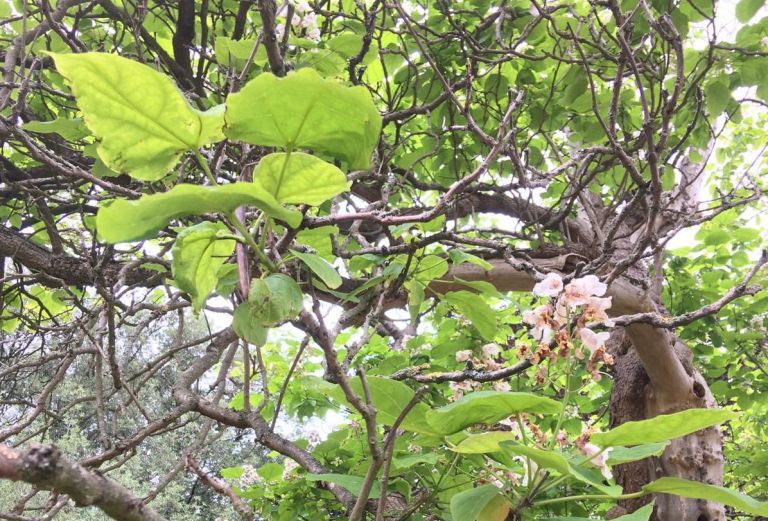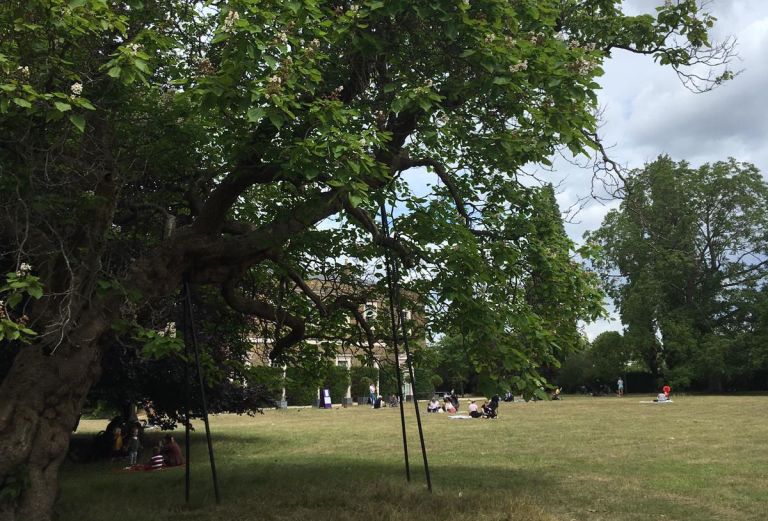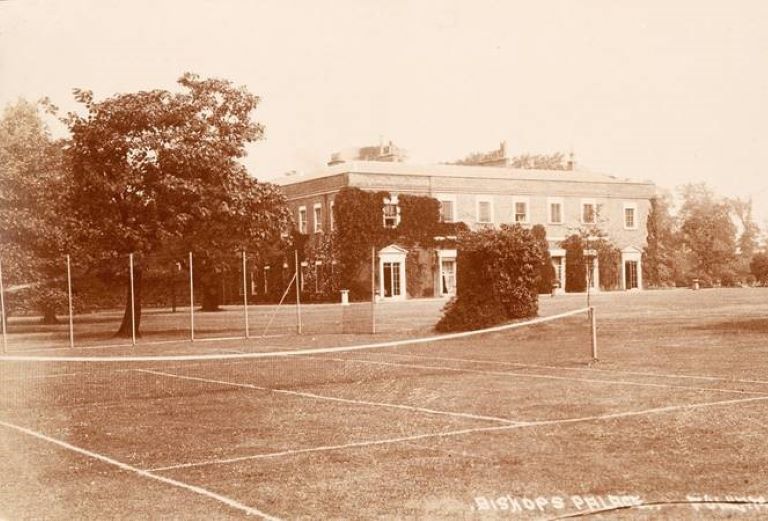
Catalpa bignonioides
Otherwise known as the Indian bean tree, our Catalpa bignonioides is in full flower on the Fulham Palace lawn. Its bark is gnarled and knotted and it is propped up with a metal crutch. Despite its common name, this tree does not come from India. It originates from the southern states of the USA and is named after a Native American tribe that lived near the specimen when it was first recorded by a European botanist.
The flowers are trumpet shaped, with yellow spots inside and grow in groups (or panicles) of 20-40. They decorate the lush green canopy of heart-shaped leaves which, interestingly, secrete nectar through tiny glands in their veins. Once the flowering is over, the fruits develop and take the form of a long, thin bean-like pod around 40cm long. Its tender leaves do not last longer than the first frost in autumn but its pods will survive through the winter.

It has been recorded by scientists that when this tree comes under attack by large amounts of leaf-eating caterpillars it produces extra nectar to attract bodyguard ants, which also attack the caterpillars! We have found our tree to be a friend to insects, too. In 2019, the base of this tree was thick with thousands of solitary ashy mining bees after their mating season in spring. They hovered close to the ground in order to create tiny burrows to lay their eggs. As they don’t harm people, it was enjoyable to watch them up close flying out of little holes in the shade of the Indian bean tree.
Fulham Palace garden is now open again after its closure due to COVID-19. Come and enjoy the flowers of this tree alongside some other highlights; the tulip tree, (Liriodendron tulipifera) and the Magnolia delavayi are two more summer flowering trees with spectacular blooms.
Hattie Moore, garden apprentice

